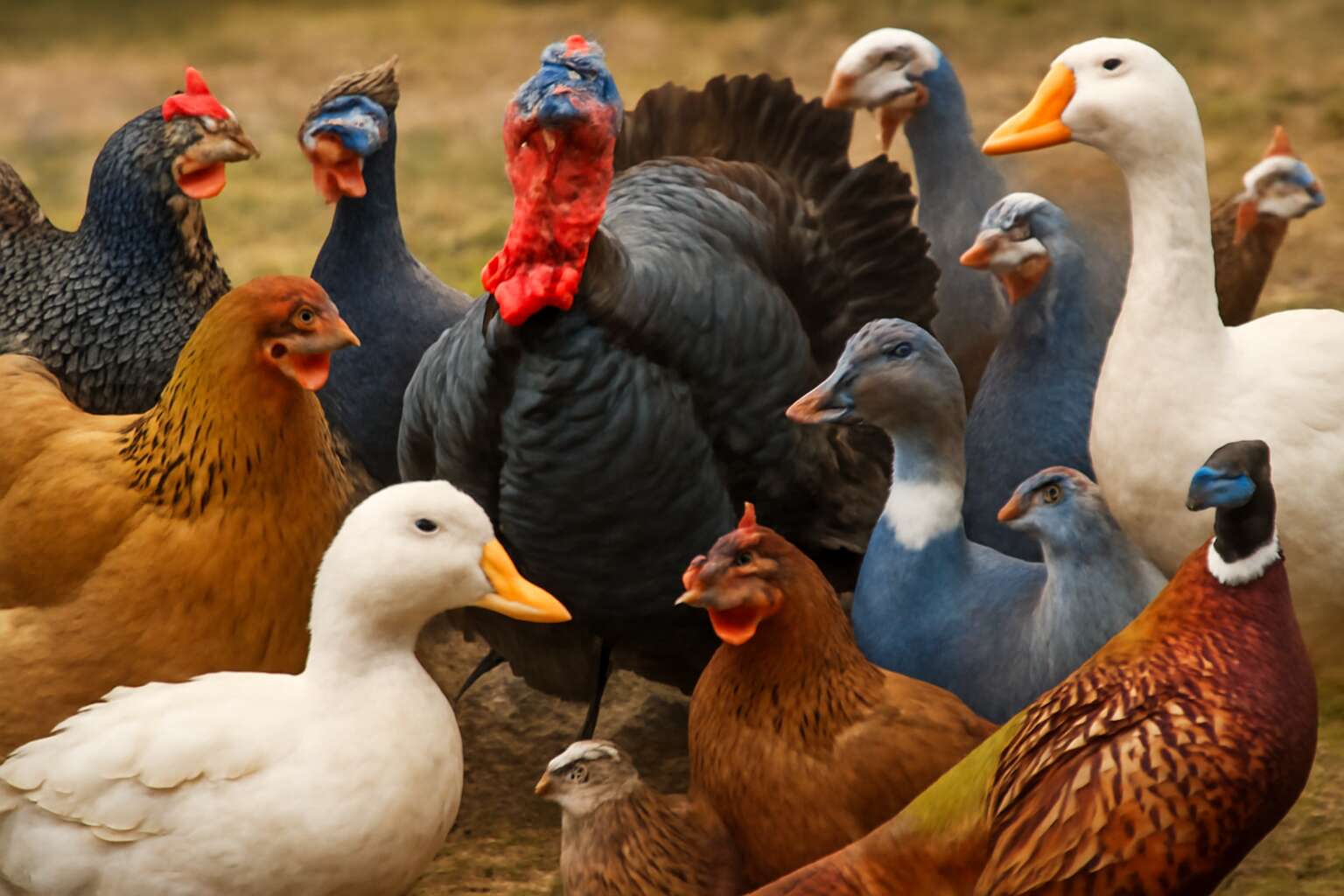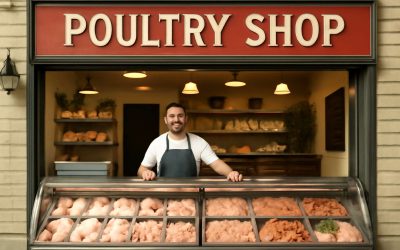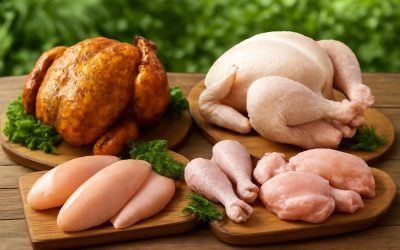Types of Poultry: An Overview
Common Categories of Poultry – Understanding the broad classification of poultry animals
Within the vast tapestry of poultry, understanding the 7 classes of poultry is akin to deciphering a complex, living mosaic. These classifications are not merely biological distinctions but reflect a deeper interplay of purpose, temperament, and utility that has evolved over centuries. Poultry, in its many forms, embodies both tradition and innovation, offering a mirror to human ingenuity and necessity.
Each class of poultry serves a unique role—whether it’s providing nourishing eggs, tender meat, or contributing to sustainable farming practices. Recognizing these categories is essential for anyone invested in the health of their flock or the sustainability of their farm. The broad classification of poultry animals helps clarify their specific needs, behaviors, and production capabilities, making it easier to tailor management strategies effectively.
For example, some classes are renowned for their prolific egg-laying, while others excel in meat production or exhibit distinctive ornamental qualities. Appreciating the diversity within the 7 classes of poultry not only deepens our connection with these animals but also invites us to reflect on the moral choices we make in farming and consumption. Poultry is more than sustenance; it is a testament to our ongoing dialogue with nature’s intricate design.
- Layer breeds that produce abundant eggs with minimal feed.
- Broiler breeds optimized for rapid growth and tender meat.
- Dual-purpose breeds capable of providing both eggs and meat.
Importance of Categorizing Poultry – Why distinguishing different classes matters in farming and consumption
Understanding the 7 classes of poultry is more than a matter of taxonomy; it’s the key to unlocking the full potential of your farm or homestead. Each class represents a unique blend of purpose, temperament, and production capability that has been refined over centuries. Recognizing these distinctions allows farmers and poultry enthusiasts to make informed decisions—whether focusing on sustainable egg production, high-quality meat, or ornamental beauty.
In South Africa’s diverse agricultural landscape, categorizing poultry helps streamline management practices and optimize resource allocation. For instance, layer breeds are prized for their prolific egg-laying, while broiler breeds specialize in rapid growth and tender meat. Dual-purpose breeds, as the name suggests, offer a versatile option, providing both eggs and meat in a single bird. This nuanced understanding of the 7 classes of poultry ensures that each flock is tailored for maximum efficiency and sustainability.
Class of Meat Birds
Broilers – Characteristics, growth, and farming practices
In the bustling world of poultry farming, the class of meat birds known as broilers stands out for their rapid growth and high efficiency. These birds are meticulously bred to optimize meat production, often reaching market weight in just 6 to 8 weeks. Their genetics favor fast muscle development, which means farmers can turn around profits swiftly, making them a cornerstone of poultry economies worldwide, including South Africa.
Broilers exhibit characteristics such as a broad breast, compact body, and a lively disposition—traits that distinguish them from other poultry classes. Their farming practices emphasize controlled environments, balanced nutrition, and humane handling to ensure optimal growth. This class of poultry demands particular attention to feed quality and housing conditions, as these factors directly influence the quality and quantity of meat produced.
Understanding the 7 classes of poultry, including broilers, reveals the diversity within poultry farming—each class tailored to specific purposes. For instance, broilers are primarily raised for their meat, while other classes like layers are focused on egg production. The strategic management of these classes highlights the intricate balance farmers maintain to meet market demands and uphold sustainable practices.
Dual-purpose Breeds – Versatile breeds raised for both meat and eggs
Among the intriguing spectrum of the 7 classes of poultry, dual-purpose breeds captivate farmers with their remarkable versatility. These breeds are not confined solely to meat production or egg laying; instead, they bridge both worlds, offering a strategic advantage for small-scale farmers and commercial operations alike. Their adaptability makes them especially valuable in South Africa’s diverse farming landscapes, where resource optimization is paramount.
Dual-purpose breeds typically exhibit a balanced physique and resilient temperament, thriving in varied environments. They are raised for their ability to produce a steady supply of eggs while also providing substantial meat yields. This dual functionality can significantly streamline farm management, reducing the need for separate flocks and simplifying logistics. In essence, these breeds embody the ingenuity behind the 7 classes of poultry, showcasing how strategic breeding can enhance sustainability and profitability.
Farmers often prefer these breeds because of their robustness and efficiency. They can be managed with more flexible feeding regimes, and their egg production complements meat harvesting cycles. For instance, breeds like the Rhode Island Red and Sussex are renowned for their reliability in both domains, embodying the very essence of the 7 classes of poultry’s diversity. Their ability to fulfill multiple roles underscores the dynamic nature of poultry farming in South Africa and beyond.
Layer or Egg-Producing Birds
Laying Breeds – Popular breeds for high egg production
Within the realm of poultry, few classes captivate as much as the diligent layer or egg-producing birds. These feathered artisans of fertility are the backbone of sustainable farming, especially in South Africa, where fresh eggs symbolize both tradition and resilience. Their prolific nature transforms humble beginnings into a steady bounty of nourishment, making them indispensable for any aspiring poultry enthusiast.
Among the 7 classes of poultry, layers stand out for their remarkable capacity to produce eggs consistently. Breeds such as the Rhode Island Red and Leghorn have become legendary for their high egg output and adaptability to diverse climates. These breeds are often chosen for their vigorous laying cycles and resilience, ensuring farmers can meet the demands of local markets with ease.
In fact, selecting the right laying breed can significantly influence farm productivity. For those seeking the perfect balance of prolific laying and hardy nature, consider breeds like the Sussex or Australorp, known for their impressive egg-laying capabilities and gentle disposition. Their ability to thrive in South Africa’s varied environment makes them a staple in many poultry farms.
Egg Production Lifecycle – Understanding production cycles and longevity
Understanding the egg production lifecycle of laying birds reveals more than just their prolific output—it exposes a fascinating interplay between biology and purpose. These birds, often viewed as the humble backbone of sustainable farming, operate on a delicate rhythm that sustains communities and economies alike. Their production cycle begins with early maturity, usually around 16 to 20 weeks for breeds like the Leghorn or Rhode Island Red, where their capacity to lay eggs peaks. However, this high productivity can be finite, typically lasting 1 to 2 years before a decline in egg-laying frequency signals a transition into a period of reduced efficiency.
Farmers in South Africa, mindful of the 7 classes of poultry, recognize that longevity varies among breeds. Some, like the Australorp, maintain a steady laying cycle for several years, while others may be more seasonal or less resilient in the face of environmental stressors. This cycle’s ebb and flow are integral to understanding how to sustain a farm’s productivity, ensuring that each bird’s lifespan is optimized for maximum benefit without compromising animal welfare or economic viability.
In essence, the lifecycle of egg production isn’t merely about quantity. It embodies a continuous dance—an existential rhythm—that underscores the very nature of poultry farming. From the initial burst of prolific laying to the eventual decline, each phase reflects a profound truth about resilience, adaptation, and the relentless pursuit of sustenance within the 7 classes of poultry.
Roosters and Bantams
Role of Roosters in Poultry Farming – Breeding, protection, and their significance
Within the intricate tapestry of poultry farming, the role of roosters is often underestimated yet undeniably vital. These regal birds are not merely symbols of dawn; they are the custodians of genetic diversity and the heartbeat of a thriving flock. In the realm of the 7 classes of poultry, roosters serve as the foundation for breeding programs, ensuring that desirable traits—such as resilience and productivity—are passed down through generations.
Beyond their role in breeding, roosters act as vigilant protectors. Their keen eyesight and commanding presence deter predators and maintain order in the flock. A well-placed crow can echo through the farm at dawn, a reminder of their importance in maintaining the balance within the poultry ecosystem. For those raising bantams or other small-class breeds, the rooster’s role becomes even more nuanced, blending protection with social cohesion.
- Breeding and genetic improvement
- Protection against predators
- Maintaining flock hierarchy
In the diverse landscape of poultry farming, understanding the significance of roosters highlights why they are indispensable in the 7 classes of poultry. Their contribution shapes not just productivity, but the very health and resilience of the flock itself, making them an essential element in sustainable farming practices across South Africa and beyond.
Bantams – Small-sized ornamental and breeding varieties
Bantams are a captivating facet of the 7 classes of poultry, renowned for their diminutive size and ornamental charm. These small-sized breeds often steal the spotlight on South African farms, not just for their appearance but also for their role in selective breeding programs. Their compact stature makes them ideal for urban and small-scale setups, where space is at a premium. Yet, beneath their delicate veneer lies a hardy resilience that belies their size.
Roosters in bantam flocks are especially vital. They serve as loyal guardians and social anchors, ensuring the flock remains cohesive amid potential threats. Their loud, commanding crow isn’t just a morning alarm—it’s a statement of dominance and protection. For breeders, bantam roosters are prized for their genetic contribution, helping to uphold the distinctive traits of these ornamental breeds.
- Genetic diversity
- Protection from predators
- Social hierarchy maintenance
In the intricate realm of the 7 classes of poultry, bantam roosters blend beauty with function. Their presence is more than ornamental; it’s a cornerstone for sustainable and resilient poultry farming in South Africa, where every bird counts in the grand tapestry of poultry husbandry. The nuanced role of these small but mighty birds underscores their indispensable contribution to the broader world of poultry classes.
Game Birds
Types of Game Birds – Wild and domestic breeds used for recreation and hunting
Game birds are a fascinating part of the 7 classes of poultry. Both wild and domesticated breeds are prized for recreation and hunting. These birds are often prized for their agility, sharp eyesight, and flavorful meat. In South Africa, game bird hunting remains a popular pastime, contributing to local tourism and conservation efforts.
Wild game birds such as guinea fowl, quail, and pheasants are often found in natural habitats, but they can also be bred for hunting purposes. Domestic breeds, like certain pheasant varieties, have been selectively bred to enhance their size, flight, and plumage. These birds serve dual roles—providing sport and contributing to the poultry industry.
- Pheasants
- Quail
- Guinea fowl
Understanding the 7 classes of poultry includes these game birds, highlighting their unique role in both recreation and sustainable farming. Their adaptability and appeal make them an essential part of the broader poultry landscape.
Conservation and Hunting Regulations – Legal considerations and preservation efforts
In the intricate dance of nature and human stewardship, the conservation of game birds emerges as a testament to our commitment to balance and sustainability. These avian marvels, whether wild or domesticated, hold a fragile place within the tapestry of the 7 classes of poultry, their existence intertwined with tradition, recreation, and ecological health. Yet, with their allure comes the imperative to uphold hunting regulations that safeguard their populations from overexploitation. Legal considerations, meticulously crafted, serve as a shield—ensuring that the thrill of the hunt does not eclipse the duty to preserve.
Across South Africa, where the wild landscapes echo with the call of quail, pheasants, and guinea fowl, conservation efforts are pivotal. These endeavors include habitat restoration, controlled hunting seasons, and breeding programs designed to bolster declining numbers. Such measures foster a harmonious coexistence—where the pursuit of sport sustains local economies yet respects the delicate fabric of biodiversity.
To navigate this complex terrain, many regions adopt a structured framework, often summarized as:
- Implementing hunting quotas aligned with population surveys
- Designating protected breeding grounds to enhance genetic diversity
- Enforcing licensing and permit systems that regulate access and preserve game bird stocks
Through these efforts, the stewardship of game birds becomes a testament to our collective responsibility, a dance of conservation and recreation that enriches both our natural heritage and our cultural identity. The preservation of these cherished species within the 7 classes of poultry is not merely an act of protection but a celebration of the wilderness’s enduring spirit.
Quail and Other Ornamental Poultry
Quail – Small game birds for meat and eggs
Among the diverse tapestry of poultry, quail and other ornamental breeds occupy a unique niche that often captivates farmers and hobbyists alike. Quail, in particular, are small game birds prized for their rapid growth and high-quality meat and eggs, making them an excellent choice for those seeking a quick return on investment. Their diminutive size belies their productivity, offering a sustainable source of protein without requiring vast acreage.
In addition to quail, other ornamental poultry such as bantams and exotic breeds add a splash of color and charm to any farmstead. These birds are often kept for their striking appearance and personality, but many also serve practical purposes. For example, certain ornamental breeds are valued for their eggs, which can be remarkably flavorful and rich. Recognizing the different roles of these classes helps farmers diversify their offerings and preserve genetic diversity.
Within the framework of the 7 classes of poultry, quail and ornamental birds exemplify the importance of balancing beauty, utility, and adaptability—traits that have kept them beloved across generations. Whether raised for meat, eggs, or simply for their ornamental appeal, these birds contribute to the vibrant mosaic of rural life and sustainable farming practices.
Other Ornamental Poultry – Peacocks, turkeys, and exotic breeds
Among the most regal and exotic members of the 7 classes of poultry, ornamental birds such as peacocks, turkeys, and other exotic breeds captivate with their flamboyant plumage and regal posturing. These birds are often the pièce de résistance of any rural estate, serving as living tapestries that celebrate biodiversity and aesthetic grandeur. While their primary allure may be visual, many of these breeds also contribute practically, whether through their flavorful eggs or their role in traditional ceremonies.
Peacocks, for example, are not just show-stoppers; they are also hardy creatures that adapt well to diverse environments. Turkeys, on the other hand, have seen a resurgence, appreciated both for their meat and their impressive annual displays. Exotic breeds—rambunctious and flamboyant—add a splash of color and exuberance to any farmstead. Their unique genetics help preserve rare traits within the 7 classes of poultry, reinforcing the importance of maintaining genetic diversity in sustainable farming systems.
Waterfowl Classes
Ducks – Domestication, breeds, and uses
Waterfowl classes, particularly ducks, occupy a fascinating niche within the 7 classes of poultry, embodying both grace and practicality. Domestication of ducks dates back centuries, their origins intertwined with the earliest civilizations that harnessed their meat, eggs, and feathers. Unlike their terrestrial counterparts, waterfowl exhibit unique behaviors and adaptations, thriving in aquatic environments with remarkable agility. The diverse breeds—ranging from the hardy Khaki Campbell to the ornamental Call Duck—serve various purposes, from commercial egg production to ornamental display. In South Africa, duck farming has seen a renaissance, driven by a growing demand for organic and free-range poultry products.
Breeds such as the Indian Runner are prized for their prolific egg-laying capabilities, while others like the Pekin are celebrated for their succulent meat. The versatility of ducks extends beyond their primary uses; their natural foraging instincts can help reduce feed costs, making them an attractive option for small-scale farmers. The waterfowl classes exemplify the broader spectrum of the 7 classes of poultry, demonstrating how adaptation and selective breeding have created a rich tapestry of options for sustainable farming practices.
Geese – Breeds, behaviors, and management
Geese represent one of the most intriguing classes within the 7 classes of poultry, embodying a harmonious blend of strength, intelligence, and social complexity. These waterfowl have been domesticated for thousands of years, serving as vital resources for meat, feathers, and even guarding property. Their behaviors—such as their remarkable migratory instincts and strong flocking tendencies—highlight their adaptability to diverse environments, especially in regions like South Africa where waterfowl farming is gaining renewed interest.
Different breeds of geese exhibit unique characteristics suited to various farming goals. For instance, the Embden is prized for its rapid growth and high meat yield, while the Toulouse is renowned for its fatty livers, making it a favorite in culinary circles. Managing geese requires an understanding of their social hierarchy, water needs, and foraging habits, which naturally reduce feeding costs. They thrive in wetlands and ponds, but also adapt well to farmyard settings with adequate space.
- Breeding programs focus on enhancing traits such as egg production, growth rate, and disease resistance.
- Behavioral traits, including their vocalizations and territorial instincts, are carefully observed to ensure harmonious flock management.
In South Africa, the resurgence of waterfowl farming reflects a broader appreciation for sustainable, organic poultry practices. Geese, with their natural foraging abilities and minimal feed requirements, exemplify the versatility and resilience that define the 7 classes of poultry, providing farmers with a rich tapestry of options for diverse agricultural landscapes.
Specialized and Rare Poultry
Heritage Breeds – Preserving traditional genetics
Specialized and rare poultry heritage breeds are the custodians of traditional genetics, offering a glimpse into the rich tapestry of poultry history. These breeds, often overlooked in commercial farming, embody unique traits that have been preserved through generations. They serve as living artifacts, maintaining genetic diversity that is vital for resilience and adaptability in changing environments.
In South Africa, conserving these breeds is more than just a hobby; it’s a vital effort to safeguard agricultural biodiversity. Heritage breeds like the Old English Game or the Sussex are prized for their hardy nature and distinctive appearances. They often possess superior disease resistance and adaptability to local climates—traits that modern breeds sometimes lack.
- Preserving traditional genetics
- Enhancing biodiversity in poultry farming
- Maintaining resilience against diseases and climate change
Engaging with these rare poultry breeds offers a way to reconnect with traditional farming practices while fostering a sustainable future. As the 7 classes of poultry continue to evolve, heritage breeds remind us of the importance of genetic diversity and cultural heritage in agriculture, ensuring these precious lines are not lost to time.
Experimental and Noble breeds – Emerging and rare varieties in poultry farming
Among the fascinating tapestry of poultry, the emerging and noble breeds occupy a special place—whispering promises of genetic innovation and aesthetic grandeur. These rare varieties often start as experimental ventures, pushing the boundaries of traditional poultry farming. Their unique characteristics—be it striking plumage or exceptional resilience—make them highly coveted by enthusiasts and conservationists alike.
In South Africa, conservation efforts have spotlighted these breeds for their potential to diversify local farms. The 7 classes of poultry encompass a broad spectrum, yet the noble and experimental breeds stand out as the avant-garde of poultry evolution. They serve not only as ornamental showpieces but also as vital reservoirs of genetic traits that could prove crucial in future climate challenges.
Consider breeds like the Ayam Cemani or the Minorca—rare gems that are gradually gaining recognition. They symbolize the bold spirit of poultry breeders eager to preserve and innovate. As these emerging varieties continue to evolve, they underscore the importance of maintaining biodiversity within the 7 classes of poultry. Their rarity and potential make them a testament to the enduring allure of poultry experimentation and nobility.




0 Comments